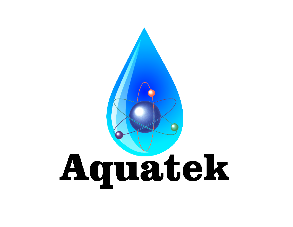Glossary of water terminology and definitions-i
Influent
The water entering a water treatment devise.
Inorganic Matter
Matter
which is not derived from living organisms and contains no organically
produced carbon; includes rocks, minerals and metals.
In-parallel Flow
A
piping arrangement which directs separate streams through two or more
water treatment units in a balanced manner, providing equal flow to each
device. The inlets of two or more units are connected together and the
outlets are connected together such that water will flow through the
units simultaneously.
In-series Flow
A
piping system in which all of the effluent flow of one unit in a water
treatment system is fed to a second and succeeding unit. This
arrangement achieves a greater reduction of contaminants than can be
obtained by the passage through a single unit.
Ion
An
atom, or group of atoms in a solution which function as a unit, and has
a positive or negative electrical charge, due to the gain or loss of
one or more electrons. It is smaller than a colloid.
Ion Exchange
A
reversible process in which ions are released from an insoluble
permanent material in exchange for other ions in a surrounding solution;
the direction of the exchange depends upon the affinities of the ion
exchanger for the ions present and the concentration of the ions in the
solution. The ion exchanger media is an insoluble permanent solid
medium. for a product offering.
Iodine Number
A
measure of the ability of activated carbon to adsorb substances with
low molecular weights. It is the milligrams of iodine that can be
adsorbed on one gram of activated carbon.
Ionization
The
dissociation of molecules into simpler, electronically charged
particles. It is related to the gaining or losing of electrons causing
the atoms to become electronically charged.
Iron
An
element often found dissolved in ground water (in the form of ferrous
iron) in concentrations usually ranging from zero to 10 ppm (mg/l). It
is objectionable in water supplies because of the staining caused after
oxidation and precipitation (as ferric hydroxide), because of tastes,
and because of unsightly colors produced when iron reacts with tannins
in beverages such as coffee and tea. As little as 0.3 ppm of iron can
cause staining. (See also ferrous iron, ferric iron, and heme iron).
See also Ferrous iron, Ferric iron
See also Ferrous iron, Ferric iron
Iron Bacteria
Organisms
which are capable of utilizing ferrous iron, either from the water or
from steel pipe, in their metabolism, and precipitating ferric hydroxide
in their sheaths and gelatinous deposits. These organisms tend to
collect in pipe lines and tanks during periods of low flow, and to break
loose in slugs of turbid water to create staining, taste and odor
problems.
Iron
Bacteria are actually living organisms, which feed on iron in water,
iron pipes and fittings. They pose no health risk but can be very
damaging to the plumbing system. These bacteria form a reddish-brown
slime, which may clog pipes and fixtures. Occasionally this slime breaks
loose causing spurts of extremely discolored water. Iron bacteria can
be identified by reddish-brown or sometimes yellow, gelatinous
formations on the surface of the water in toilet flush tanks or by slimy
clumps of iron oozing form pipe leaks or corrosion. They can cause bad
tastes and odors in the water supply.
Iron
bacteria can not be treated by most common water filtration methods and
can cause fouling in water treatment equipment. In extreme cases it can
actually clog and destroy well pumps.
To
treat this problem you must first kill the bacteria by chlorination or
some other oxidizing-disinfecting method and then filter it out of the
water.The well and all the piping must first be treated with heavy
amounts of chlorine for an extended period of time, using a process
known as "shock chlorination."
Iron Fouling
The accumulation of iron on and within an ion exchange resin or filter bed resulting in a reduced capacity of the media.
